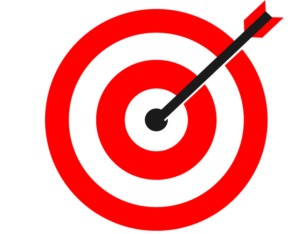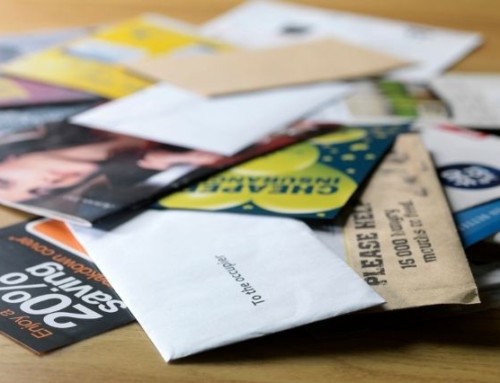If your small business is just starting email marketing efforts, getting started can be a bit overwhelming. Which platform should you use? How do you segment lists for better targeting? How often should you send emails? All good questions and we’re here to answer a few of them for you. Check out our email marketing tips for beginners to help point you in the right direction and ensure your campaigns are successful.
The basics before you get started
 There are a few fundamentals you need to establish before you even begin to set up your email marketing. The first is to have a good understanding of who your target audience is. Chances are if you’re a small business marketer, you’ve already done at least a basic small business marketing strategy to help you understand who your audience is. It’ll better prepare you to create emails that speak directly to their needs and wants in a language they understand. It’ll also help you to know what kind of content they’ll be most open to receiving and in what format. Second, you’ll want to segment your email list so you can better target your email messaging. Segmenting may be by location, industry, or interest, or it may be split between existing customers, past customers, and prospects. The goal is to send the most targeted content to your audience so if your message will be different based on any of the above, it’s a good idea to segment your contact list! Of course, you only want people on your email distribution list who gave you express permission to contact them. NEVER buys lists or scrape emails from websites! If you need help building your email contacts, check out these four easy ways to build your email marketing list.
There are a few fundamentals you need to establish before you even begin to set up your email marketing. The first is to have a good understanding of who your target audience is. Chances are if you’re a small business marketer, you’ve already done at least a basic small business marketing strategy to help you understand who your audience is. It’ll better prepare you to create emails that speak directly to their needs and wants in a language they understand. It’ll also help you to know what kind of content they’ll be most open to receiving and in what format. Second, you’ll want to segment your email list so you can better target your email messaging. Segmenting may be by location, industry, or interest, or it may be split between existing customers, past customers, and prospects. The goal is to send the most targeted content to your audience so if your message will be different based on any of the above, it’s a good idea to segment your contact list! Of course, you only want people on your email distribution list who gave you express permission to contact them. NEVER buys lists or scrape emails from websites! If you need help building your email contacts, check out these four easy ways to build your email marketing list.
Pick an email marketing platform
When you’re first starting out, it’s easy to send emails to a very small group of people through your work email, but at some point, it’s a wise investment to use an email marketing platform. There are numerous ones to choose from, some basic and some complex. If you’re just starting out with email marketing, here are a few solid choices:
- Constant Contact
- Mailchimp
- Zoho
- SendinBlue
Here’s a nice article comparing various email marketing platforms. You’ll want one that will be easy for you to use, low cost, gives ample reporting, and has a good delivery rate as well as solid customer service.
Decide on your content
 One of the best ways to determine what content you want to share in your emails is to decide what you’re trying to accomplish. Are you trying to sell something? Educate? Introduce your brand? This will dictate the messaging in your content. You’ll also want to refer back to your target audience to decide what kind of content is best to share (videos, text, images, etc.). Be sure to tailor it to your audience. The messaging should be genuine and personable. Decide on your marketing voice: will you be funny, inflammatory, educational, or nurturing? You’ll want consistency in your content so deciding this ahead of time is a smart move. You might even want to plot it out in a basic editorial calendar. Here are a few good overall tips for email content:
One of the best ways to determine what content you want to share in your emails is to decide what you’re trying to accomplish. Are you trying to sell something? Educate? Introduce your brand? This will dictate the messaging in your content. You’ll also want to refer back to your target audience to decide what kind of content is best to share (videos, text, images, etc.). Be sure to tailor it to your audience. The messaging should be genuine and personable. Decide on your marketing voice: will you be funny, inflammatory, educational, or nurturing? You’ll want consistency in your content so deciding this ahead of time is a smart move. You might even want to plot it out in a basic editorial calendar. Here are a few good overall tips for email content:
- Don’t be too text-heavy
- Break up content with images
- Use bold to make text easy to scan
- Speak to people’s emotions, needs, or wants
- Always include a call to action so people know what to do after reading your email
Also, be sure to make it easy for people to contact you in a variety of ways: email address, phone number, website, and social channel links are all good ideas! Last, create a solid library ahead of time of images you’ll want to use in your email blasts; make sure you either own these images or they are royalty-free.
Plan out your email subject line
A good email can die on the vine if the subject line is lousy. We’re all inundated with emails every day and usually decide which ones to read or even keep by looking at the subject line. Subject lines are CRITICAL to the success of your email marketing! Here’s a great article about strong email subject lines to get your creative juices flowing and is full of email marketing tips and subject line ideas. Don’t skip this step! Keep the subject line short and engaging. Don’t over-punctuate and don’t use all caps; both are surefire spam filter triggers.
Before you hit send
 There are a couple of best practices to follow before you send your first and subsequent email blast out. First, proofread it, and ask someone else to review it as well (it’s very difficult to proof your own work and easy to overlook errors). Send a test email to yourself so you see how it’ll look to your recipients. Determine ahead of time how often you’ll send emails and the best day/time to send them for your audience in particular. Smart Insights wrote a helpful piece a few years ago about this but the bottom line is really what’s best for your audience, which will take trial and error. Keep this in mind: the #1 reason people unsubscribe from an email list is too many emails. Consider exactly how unique each email is and if it merits a daily, weekly, or monthly send.
There are a couple of best practices to follow before you send your first and subsequent email blast out. First, proofread it, and ask someone else to review it as well (it’s very difficult to proof your own work and easy to overlook errors). Send a test email to yourself so you see how it’ll look to your recipients. Determine ahead of time how often you’ll send emails and the best day/time to send them for your audience in particular. Smart Insights wrote a helpful piece a few years ago about this but the bottom line is really what’s best for your audience, which will take trial and error. Keep this in mind: the #1 reason people unsubscribe from an email list is too many emails. Consider exactly how unique each email is and if it merits a daily, weekly, or monthly send.
Email marketing is one of the most effective marketing tactics a small business owner can use for generating more business. These email marketing tips for beginners should point you in the right direction to get started and see good results from your efforts.
- Marketing Tactics That Your Small Business Can Do for Free - January 10, 2024
- How to Create Images for Your Small Business Website - December 6, 2023
- How Small Businesses Benefit from Referrals - November 6, 2023





